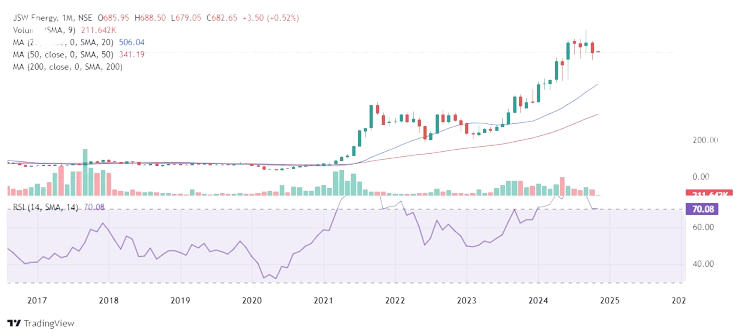Understanding the Raymond Demerger and Value Unlocking Opportunities
The demerger involves separating its core lifestyle business, which includes textiles and branded apparel, from its real estate division
A demerger is a corporate restructuring process where a large company divides parts of its business into separate, independent entities. Essentially, it “breaks up” a conglomerate, allowing each resulting company to operate independently with its own management and strategy.
Value Unlocking in Demergers
Value unlocking refers to realizing the hidden value of a business or assets within a company by separating them. When a company undergoes a demerger, the newly created entities often become more valuable than the original conglomerate. This increase in value can occur because of several factors:
Increased Focus: Each new company can focus solely on its core operations, allowing for better resource allocation and streamlined decision-making.
Clarity for Investors: Investors can more accurately assess the value of each business segment as independent entities rather than evaluating multiple, unrelated businesses under one conglomerate.
Improved Market Perception: Markets often value “pure-play” companies—those focused on a single business area—higher than diversified conglomerates, leading to potentially higher valuations for separated entities.
This process often drives higher stock prices and increases shareholder wealth.
In some cases, index funds may temporarily sell shares in the newly formed entities due to statutory guidelines, which can cause short-term price dips. This period can present a strategic entry opportunity for investors.
Why Value Unlocking Matters for Investors
For investors, value unlocking provides an opportunity to benefit from the intrinsic worth of a company’s assets, which may have been undervalued. Successful value unlocking often results in a positive market reaction, such as a surge in stock price, driven by improved financial outlook and greater clarity for investors.
Notable Demergers in the Indian Market
Several high-profile demergers in the Indian stock market highlight this trend of unlocking value and focusing on core business areas. Here are some notable examples:
Max Estates Ltd.
Listed on October 30, 2023, following a reverse merger, Max Estates stock debuted at ₹298 on NSE and ₹270 on BSE, and currently trades around ₹573.Piramal Pharma Ltd.
Following the acquisition of DHFL, Piramal Enterprises separated its financial services from its pharmaceutical division. Listed at ₹180 in November 2022, Piramal Pharma’s stock reached a low of ₹67 and now trades at ₹281.Aarti Pharmalabs Ltd.
Spun off from Aarti Industries in January 2023, Aarti Pharmalabs now focuses on pharmaceuticals, while Aarti Industries continues with specialty chemicals. Initially listed at ₹272, it currently trades at ₹642.Bajel Projects Ltd.
Bajaj Electricals demerged its power transmission and distribution (T&D) business to form Bajel Projects Ltd., which listed on December 19, 2023, at ₹202 and now trades around ₹262 after reaching a high of ₹332.Jio Financial Services
In 2023, Reliance separated its financial services segment into Jio Financial Services, debuting at ₹260, with current trading at ₹323 after peaking at ₹392.JSW Energy
JSW Group streamlined its energy and steel operations, attracting renewed investor interest in JSW Energy amid growth in India's renewable energy sector. Its stock rose from ₹80 in January 2021, peaking at ₹817 in September 2024 and now stands at ₹682.
These spinoffs reflect a growing trend among Indian conglomerates toward improved governance, optimized operations, and enhanced market valuations through focused business units. Other notable examples include Suven Pharmaceuticals, Borosil Renewables, and Jubilant Life Sciences.
Raymond Demerger: Opportunities for Investors
Raymond Limited, a leading Indian textile and apparel company, recently announced a demerger to simplify its business structure and unlock shareholder value. The demerger involves separating its core lifestyle business, which includes textiles and branded apparel, from its real estate division, Raymond Realty.
Key Elements of the Raymond Demerger
Unlocking Shareholder Value: By separating Raymond Realty from its lifestyle segment, Raymond aims to give each business greater focus and growth potential, potentially increasing overall shareholder value.
Focused Growth Strategies: Each entity will pursue strategies that align with its specific industry, optimizing performance and resource allocation.
Attracting Industry-Specific Investors: The demerger will allow investors to directly invest in either the lifestyle or real estate business, based on individual preferences and market performance.
Future Outlook
The Raymond demerger aligns with the strategic shift seen in other large Indian companies, where a simplified structure attracts diverse investment and enhances shareholder value.
As an independent entity, Raymond Lifestyle listed in September 2024 at ₹3018, dropping to a low of ₹2073 in October 2024, and currently trades at ₹2250. Following the pattern seen in similar demergers, the stock may experience long-term growth potential after the initial consolidation, rewarding investors who are prepared to hold through the medium to long term.
Disclaimer: This document is for informational purposes only and may contain errors or biases. Please conduct independent research before making any financial decisions.











Can help valuation on raymonds
Have been holding Raymonds since COVID dip, but had never understood the reason behind the current dip after the demerger
Nicely explained